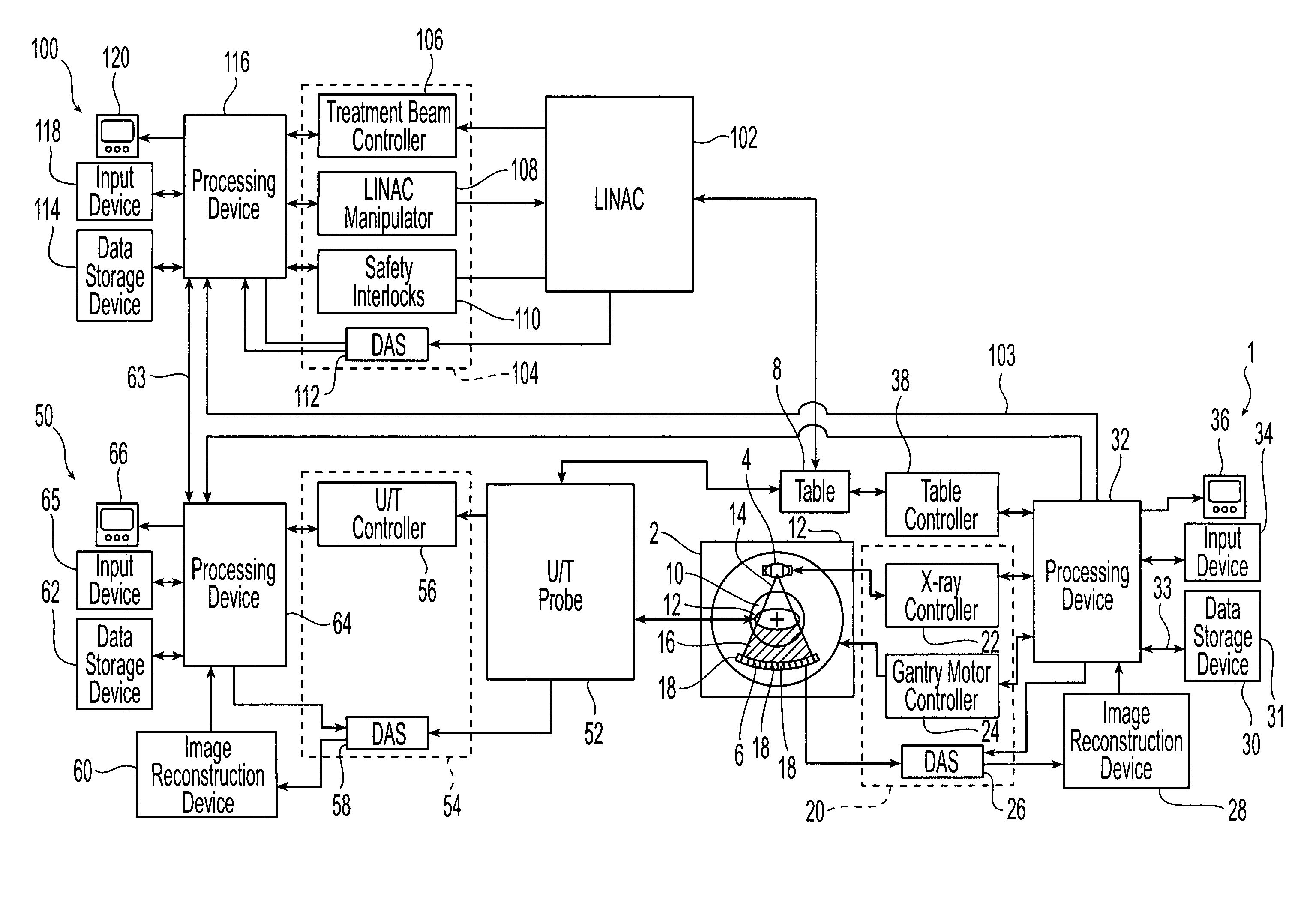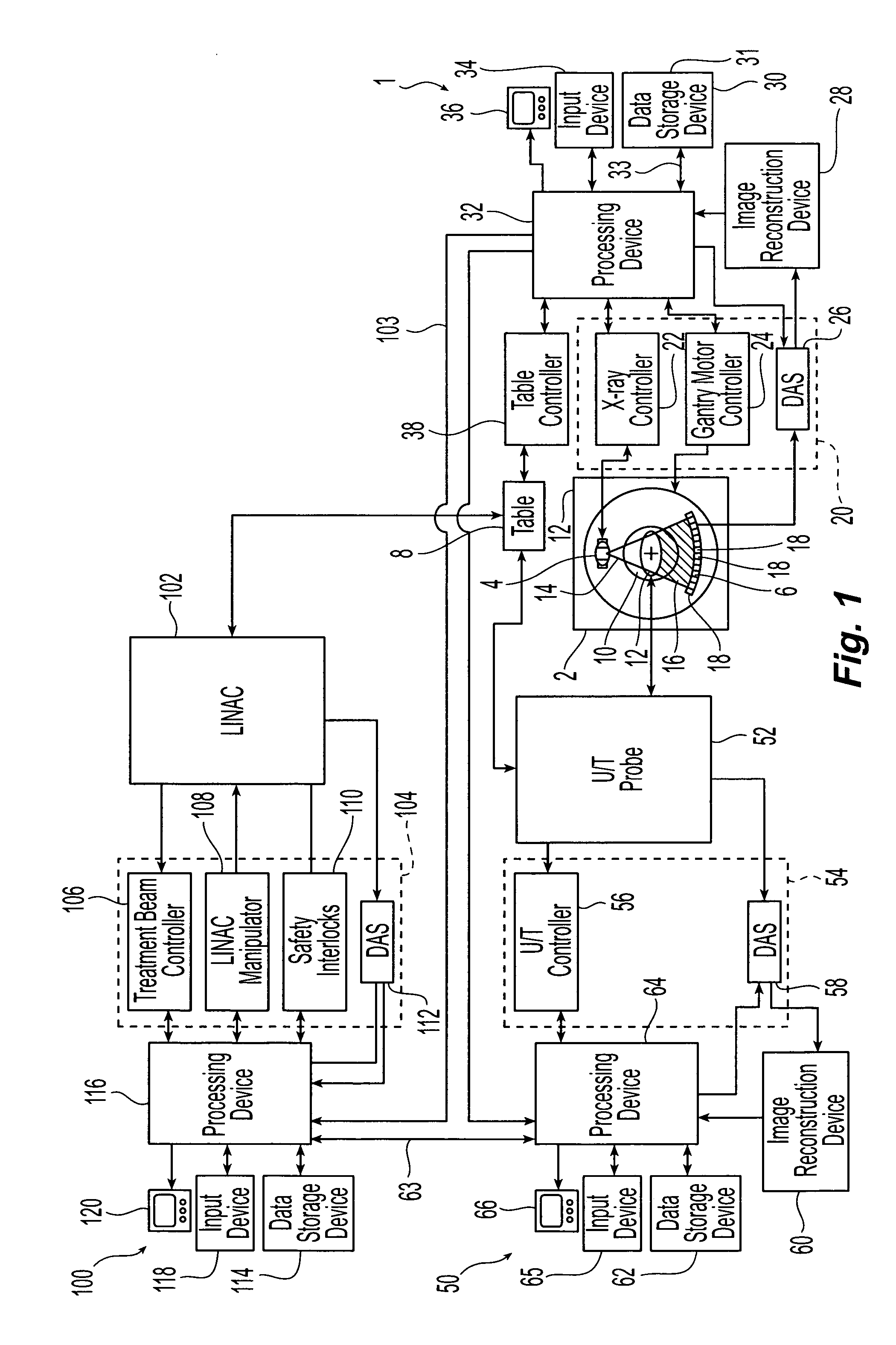Real time ultrasound monitoring of the motion of internal structures during respiration for control of therapy delivery
a technology of internal structure and real-time ultrasound, applied in the field of radiation therapy precision targeting, can solve the problems of loss of accuracy, movement can be particularly problematic, loss of accuracy,
- Summary
- Abstract
- Description
- Claims
- Application Information
AI Technical Summary
Benefits of technology
Problems solved by technology
Method used
Image
Examples
example 1
[0064] In an exemplary use of the method of the present invention, a lung lesion is to be treated with radiation therapy, particularly ERT. As described previously, the lung moves during the respiratory cycle, and thus it is desirable to irradiate the patient only to the extent that the radiation is directed at the lesion itself. The lung cannot be readily imaged using ultrasound, and thus this hollow organ cannot be imaged with ultrasound. In this case, the liver may be chosen as the surrogate organ and a suitable surrogate AF within an easily visualized area of the liver may be chosen, while the lung contains the target lesion. Because lung lesion movement may be correlated to movement of a surrogate AF within the liver as described above, the radiation beam may be triggered based on movement of the surrogate AF with respect to a reference image. Because the target lesion is in a known anatomic position when the surrogate AF is in its “snapshot” position, the beam may be timed and...
example 2
[0065] In another exemplary use of the method of the present invention, a lesion of the liver is to be treated with radiation therapy, particularly ERT. As described previously, the liver moves during the respiratory cycle, and thus it is desirable to irradiate the patient only to the extent that the radiation is directed at the lesion itself. The liver may be readily imaged using ultrasound, simultaneously with radiation treatment of the liver, so long as the ultrasound transducer does not interfere with the field of the radiation treatment. No surrogate organ is needed. Because liver lesion movement may be tracked, the radiation beam may be triggered based on movement of the liver with respect to an AF within the liver chosen from a reference 2-D ultrasound image.
[0066] A representative computer system is now described in conjunction with which the embodiments of the present invention may be implemented. The computer system may be a personal computer, workstation, or a larger sys...
PUM
 Login to View More
Login to View More Abstract
Description
Claims
Application Information
 Login to View More
Login to View More - R&D
- Intellectual Property
- Life Sciences
- Materials
- Tech Scout
- Unparalleled Data Quality
- Higher Quality Content
- 60% Fewer Hallucinations
Browse by: Latest US Patents, China's latest patents, Technical Efficacy Thesaurus, Application Domain, Technology Topic, Popular Technical Reports.
© 2025 PatSnap. All rights reserved.Legal|Privacy policy|Modern Slavery Act Transparency Statement|Sitemap|About US| Contact US: help@patsnap.com



